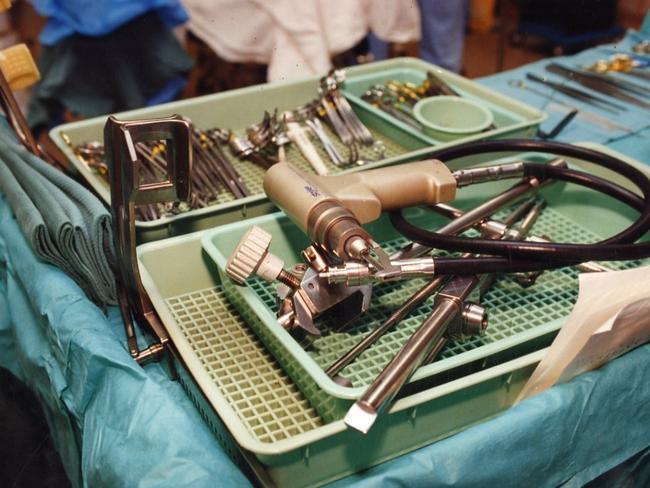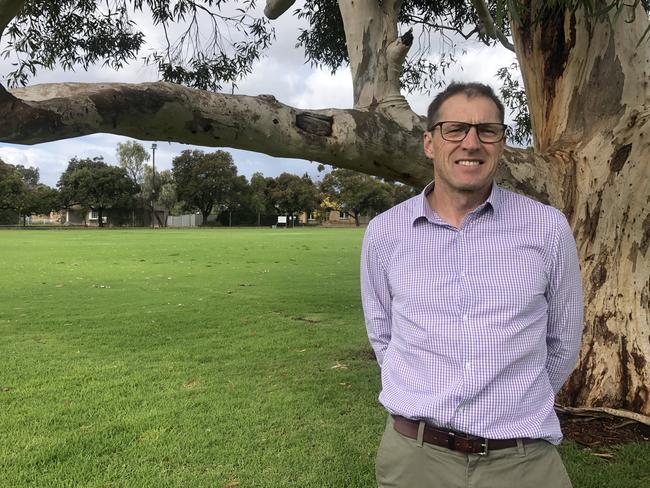NSW’s worst hospitals: Deadly toll of mistakes, infections revealed
Every year, 2000 Aussies break a bone in a hospital and 4000 catch blood infections. In this exclusive report, we reveal the best and worst performers.
NSW
Don't miss out on the headlines from NSW. Followed categories will be added to My News.
How healthy is your local public hospital?
Not very, if the answer is Blacktown Hospital, but if you live near top performers Royal Prince Alfred in Camperdown or St Vincent’s in Darlinghurst your healthcare facilities are in excellent condition.
One of the most important ways to drive better performance is transparency, which is why The Daily Telegraph is shining a spotlight on our hospitals and providing you — the consumer — with in-depth information about the performance of each.
We have also ranked them on a number of key indicators.
The Daily Telegraph has combed through government data to create an easily searchable database for our readers which ranks facilities on each of 25 benchmarks.
“Making performance data available does improve the performance of hospitals,” Australian Institute of Health Innovation Associate Professor Peter Hibbert said.
“When hospital management see this data and can compare it to the performance of other hospitals, they are more likely to act.”
Our special series of report cards over the coming days will show how your hospital performs on everything from poor meals and impossible parking, to infection rates, cleanliness in toilets, elective surgery waiting lists and rankings of maternity services.
We will also tell you how much of your taxpayer money is being wasted on medical negligence payouts.

Top of–the–table Royal Prince Alfred had the quickest hip surgery and knee surgery waits, and the quickest elective surgery overall, while St Vincent’s had relatively good surgery waits and low staph infections.
St Vincent’s also had good outcomes on the 30-day mortality rate — making the top 10 for heart, stroke and hip survival rates post hospital.
Country hospitals dominated many top rankings, partly because of the smaller numbers in the samples, but also because many categories include patient experiences where rural hospitals have time to treat patients well.
That ranges from the cleanest toilets at Young, the best meals at Forbes, the best pain relief for birthing women and easy parking at Byron.
Hospitals that dominated the worst rankings were often marked down on many scores.
Blacktown Hospital had the worst rate for the opportunity to speak to a doctor and the lowest ranking for clean toilets.


The least kind nurses were at Westmead Hospital, according to patient surveys.
Bankstown Hospital didn’t do well on the cleanliness of wards, nor on pain relief during labour. Liverpool had the least clean wards.
Shoalhaven Hospital had the longest times spent in emergency before getting treatment, as well as longer waits for knee surgery and skin lesion removals. Wollongong Hospital was among the worst for 30-day mortality rates after a heart attack.
Staph infections were worst at Milton Ulladulla and Gosford hospitals.
Over the past two decades there’s been growing recognition that focusing on patient safety — and reporting on performance — brings enormous benefits, with both federal and state governments investing heavily in setting up agencies to carry out this job.

But a lot of the data is buried away in government documents and websites.
Details about serious mistakes in the hospital system are often subject to legal nondisclosure clauses, with coronial inquests one of the few avenues available to scrutinise deadly mistakes.
Suffering a safety lapse in a hospital is not just bad luck or personally costly. The Australian Commission on Safety and Quality in Health Care estimates the readmission costs alone in hospitals to treat adverse events was $4.1 billion in 2017-18. That amounts to 8.9 per cent of all hospital expenditure.
A patient catching an infection results in an extra 18 days in hospital, and with an overnight stay costing $2074, the cost blowout for a single infection can reach $37,539.
Despite the growing recognition of patient safety issues, mistakes keep happening.
Two years ago, 12 patients throughout Australia died after mistakes in their drugs; at least 17 died after a fall; and another 2000 broke a bone; while 3698 caught a potentially deadly bloodstream infection from their IV drip. Astonishingly a total of 28 patients had something left inside their body after surgery.

An astounding 7519 NSW patients were injured during surgery or medical care in a NSW hospital in the 2018-19 financial year.
In NSW there were 6888 infections after procedures and 12 people had objects left in their body after surgery.
Three died or suffered serious harm because an oro or naso gastric tube was incorrectly positioned. Another 359 people were injured as a result of drug mistakes.
The University of Newcastle’s Professor Brett Mitchell says research shows 95,000 urinary tract infections are acquired in Australian hospitals every year, resulting in an extra 20 bed days per patient — yet rates can be cut with more cautious use of catheters and daily washing.
Health Minister Brad Hazzard strongly defended the health system, saying NSW has the best health system in the world amid “unprecedented” spending on new hospitals, including almost $3 billion this year.
Mr Hazzard said Blacktown had a new head of obstetrics, seven new doctors and advertisements placed for 15 additional midwives.



